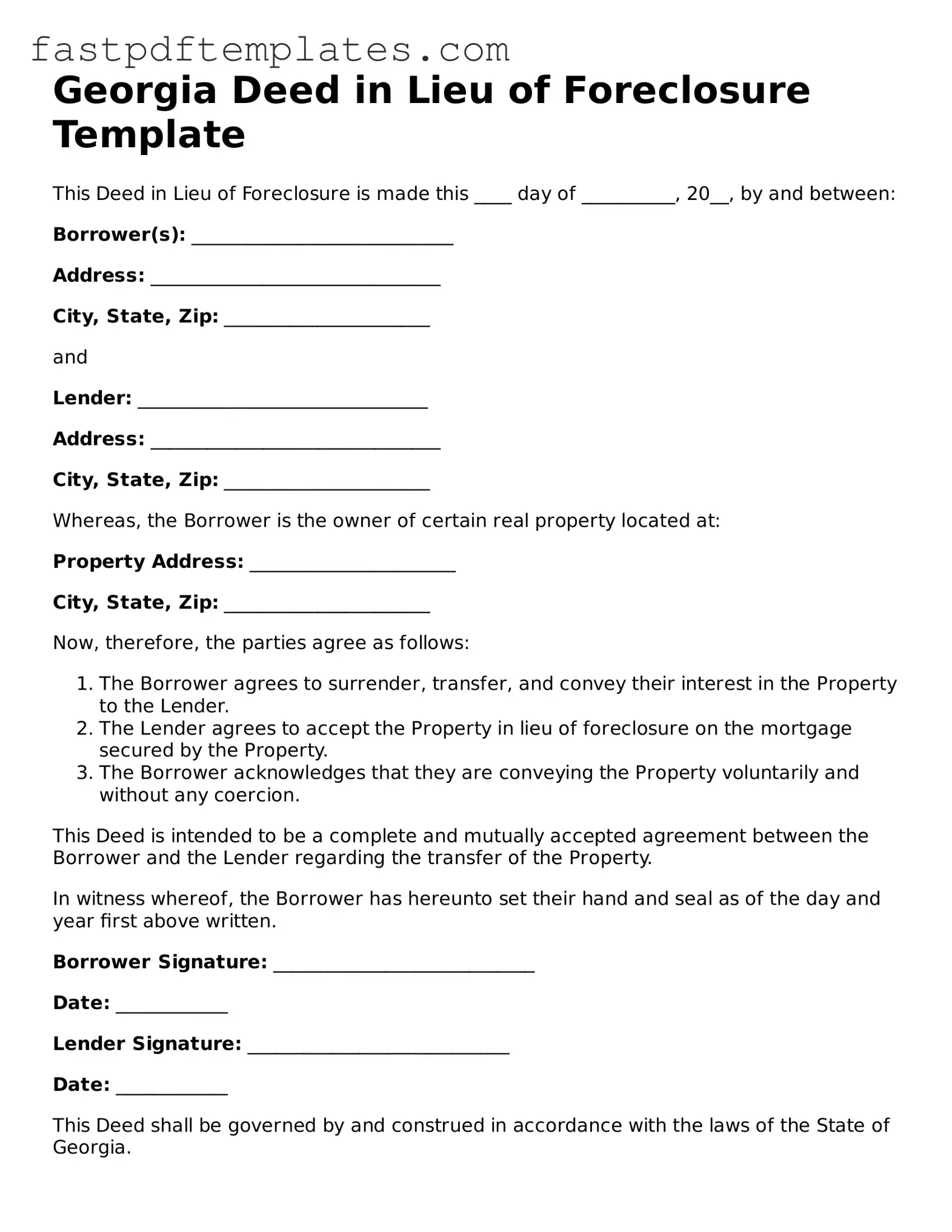Georgia Deed in Lieu of Foreclosure Template
This Deed in Lieu of Foreclosure is made this ____ day of __________, 20__, by and between:
Borrower(s): ____________________________
Address: _______________________________
City, State, Zip: ______________________
and
Lender: _______________________________
Address: _______________________________
City, State, Zip: ______________________
Whereas, the Borrower is the owner of certain real property located at:
Property Address: ______________________
City, State, Zip: ______________________
Now, therefore, the parties agree as follows:
- The Borrower agrees to surrender, transfer, and convey their interest in the Property to the Lender.
- The Lender agrees to accept the Property in lieu of foreclosure on the mortgage secured by the Property.
- The Borrower acknowledges that they are conveying the Property voluntarily and without any coercion.
This Deed is intended to be a complete and mutually accepted agreement between the Borrower and the Lender regarding the transfer of the Property.
In witness whereof, the Borrower has hereunto set their hand and seal as of the day and year first above written.
Borrower Signature: ____________________________
Date: ____________
Lender Signature: ____________________________
Date: ____________
This Deed shall be governed by and construed in accordance with the laws of the State of Georgia.
IN WITNESS WHEREOF, the parties hereto have executed this document.
